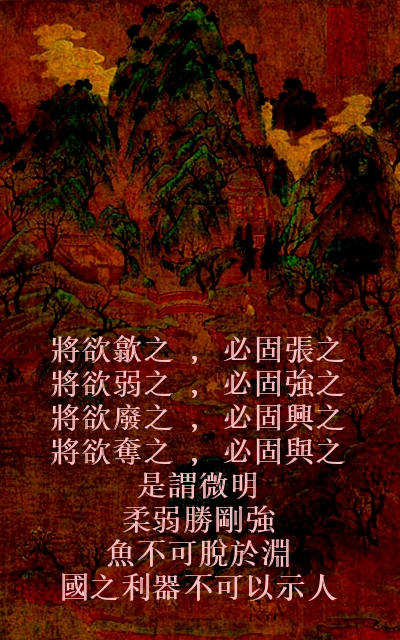道結論 Tao Conclusion #29

© Tao Conclusion - bone structure of Daodejing #36 (English commas added).
Copyright ©2019 August 08, 2019
The Qinren{1} writings speak of and describe tao as the principle and process of how Nature was created with ingredients, as well as how new things are still being created with ingredients. For several years I have publicly written of the pyramid analogy, as well as of others, of how numerous ingredients combine in harmony to create a new thing.
The reasoning is very simple... if an individual wishes to create wheat bread, then the individual will choose to include the ingredient of wheat.
A very easy portion of a Qinren sentence: 'Topmost virtue not virtue...'. The remainder of the sentence and section, is very descriptive of a creative tao, and worded from a firsthand point of view.
The Qinren wording is based upon real things, real things that can be observed, measured in Nature, firsthand experienced, and described from firsthand experience. Prior to 1980, the Qinren writings are the only known writings to have ever existed that expressed the five core principles{2} of logic: [1] firsthand experience, [2] firsthand description from firsthand experience, [3] all knowable things in Nature are composed of three or more ingredients that create the created thing, [4] all knowable things in Nature are different: there exists nothing known in Nature that is identical, the same, or equal to anything else, and [5] Nature is not flat. Two of the numerous additional principles are [6] self-observation and [7] no self-mutilation.
'Honest person, oneself become. ...Honest person thing him finish. Begin not honest, not-have thing. Is therefore junzi honest, him be expensive(precious). ...Place together become thing, become self benevolence, become thing know, nature him virtue, combine outside inside him way.' (Chidao draft version of a Confucius quote from 中庸 Zhong Yong (Middle Use, aka Doctrine of the Mean) #26)
Qinren and Confucius... pearls.
The tao of Qinren, and the 'personal tao'{3}, include self-thinking, and self-participation in one's own life... both are very rare.
Footnotes
{1}: The popular name 'Laozi' is known to be a myth, and is not the Daodejing author's real name. Therefore, to distinguish the good author's voice from the metaphysical authors' voices within Daodejing, I invented the name 'Qinren' to point to the voice within Daodejing that appears to be of the earliest writings, as well as being the only voice to speak of firsthand experience. Qinren is a fitting name because of 'qin' implying 'a seven string zither', and 'ren' implying 'person': Qinren, 'warm heart like soft guqin person'.
{2}: The five principles are my own, and, as written, are highly abbreviated for brevity. There are other core principles that include the sixth and seventh, but if a topic fails the first five principles, then there is no reason to bother evaluating the topic further.
{3}: 'Personal tao' is my own phrase that is used to infer a firsthand self-state that is acquired naturally through an individual's goal of achieving a specific inner quality. A personal tao does not follow any teaching, nor does a personal tao care if it meets any variation of Taoism or any other ideology. Important of noting is that the Qinren tao achieves recognition because Qinren's writings appear to parallel the known personal tao: the authenticity of the Qinren tao is judged by the personal tao, the firsthand personal tao is not judged by the Qinren tao. The Qinren tao is written, and therefore has no authority. The firsthand personal tao is the sole authority.